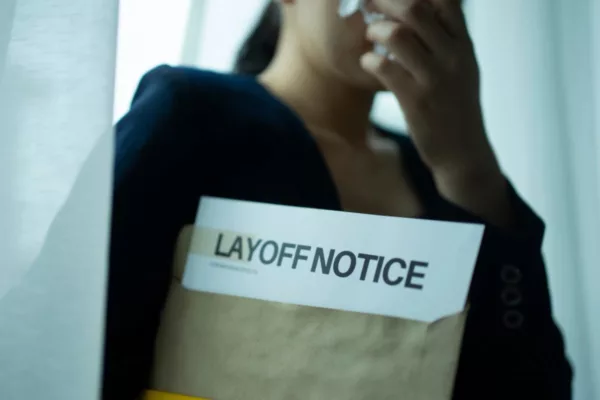Layoffs are not a viable option for Companies. Find a different approach to the problem.

Companies frequently suffer after layoffs.
Companies and employees experience layoffs in 2023. Given the slowing economy, employers today appear to believe they have an adequate number of employees—possibly even too many. Tens of thousands of workers are being let go as a result of this in the banking, tech, and other sectors.
Executives, though, should exercise caution when making significant cuts. Because having too few employees is nearly always worse than having too many, as the past three years have served as a reminder. When businesses are understaffed, morale plummets and earnings suffer. And soon after reducing their workforces, companies frequently find up spending a tremendous amount of time and energy rebuilding them.
The dean of New York University’s School of Professional Studies, Angie Kamath, asserts that “the good organisations will perform very well in a recession, whether they’re somewhat understaffed or a little understaffed It is more reliant on variables like product mix and pricing strategy than it is on particular staffing levels.

Instead of panicking and firing the employees they have worked so hard to hire, a company that is somewhat overstaffed should think about what to do with that capacity. “The data has been consistent that layoffs are not good,” advises Kamath, listing a variety of negative effects from bad PR to higher turnover among the remaining workforce.
Businesses considering layoffs may want to take a look at the retail sector’s history, which for many years aimed to maintain staff levels as low as feasible. They used algorithms to estimate when demand would be high and low and ensure that stores had “just enough” staff during those times. In theory, this allowed them to avoid hiring as many employees.
However, placing such a high priority on worker optimization resulted in businesses being understaffed during the busiest times. 41 locations of a sizable retail chain were examined in a 2014 study published in the journal Production and Operations Management.
All 41 locations were consistently understaffed during peak hours, according to the researchers, who were led by Vidya Mani of the University of Virginia’s Darden School of Business. The researchers concluded that increasing employees at certain times would have increased profits and sales.
Zeynep Ton and Amanda Silver of the Good Jobs Institute, a nonprofit organisation that collaborates with businesses in low-wage service industries to increase financial performance and job security, contend that the issues associated with understaffing extend beyond lost sales.
Professor Ton’s study at the Massachusetts Institute of Technology, which highlights the dangers of being too lean, is a source of inspiration for the piece. Waste results from understaffing: Pallets of food rot when there aren’t enough employees to transfer them from trucks to warehouses. When customers can’t get the assistance they require right away, they become irate and decide to do business somewhere else. Inefficiency is the result. When inventory is chaotic, it’s harder for employees to find what they need right away.

Understaffing may be fatal in the healthcare industry, where staffing numbers have been an issue for years. In particular, patients are more likely to catch an infection in a hospital with insufficient staffing, according to studies linking low staffing levels to poor patient outcomes (because of things like decreased handwashing by frazzled staff).
Additionally, they have a higher risk of dying and receiving the incorrect drug dosage. Nurses working at these facilities are more likely to experience burnout and have a lower propensity to refer sick friends and family members to their facility.
Understaffing isn’t always due to management’s imprudence. With staff leaving due to the pandemic, restaurants, which are already busy businesses, have had to cut back on hours by roughly 6.4 hours per week in the US.
Acute understaffing has a demonstrable effect on revenue regardless of the source. During a recent trip to England, I discovered that my favourite pub had to close for two weeks during a busy time of year due to staff shortages. It doesn’t matter if they had already cut the number of diners they were serving in half.
A full-page, single-spaced manifesto beside another restaurant’s restroom revealed that they had to discontinue providing hot food and table service owing to an “extremely challenging staffing situation. It was exacerbated by the “lack of affordable homes” in the area.
Stress was consuming the unnamed author. It makes sense that a restaurant worker study conducted during the epidemic correlated excessive drinking with being overworked.
Such conditions are beyond what most workers can endure. Just consider the recent nurses’, railroad workers’, teachers’, and baristas’ strikes. Their main demand is to increase staffing.
Certain bosses may have a distinct perspective. They may believe that these employees are simply being lazy, or that “no one wants to work,” in the words of management expert Kim Kardashian. That’s a managerial gripe that predates the existence of labour itself.
I’m ready to accept that there is some amount of human laziness. This is why we created the remote control and the Bluetooth-enabled electric kettle, among other things. Additionally, overstaffing has hazards. Workers may feel unchallenged and bored, collecting paychecks but not truly engaging. We dubbed this “silent quitting” in the year 2022.
Scholars coined the phrase “social loafing” in the 20th century. The ability to use a more extensive range of abilities is made possible by mild understaffing, which can keep personnel engaged and focused (something most people find satisfying). However, many industries have long since moved beyond merely having a few open positions.
Performance and motivation are harmed by ongoing understaffing. The overworked staff makes errors. Disengagement occurs between them. Employees argue that they shouldn’t care about the future of the company if it isn’t hiring additional people. Since no one likes to feel incompetent, they’ve practically been set up to fail.

The general economy suffers when a certain amount of work is simply impossible to complete. In the US, there are still 90,000 fewer childcare providers than there were before the epidemic (when there weren’t enough), making it more difficult for parents to accept paid employment. Port congestion and supply chain snags are a result of a dockworker shortage.
Cities struggling to persuade distant workers to resume commuting have a challenge due to a lack of transit workers. It’s important to keep this common suffering in mind while businesses try to “right-size” their workforces. Even while the demand for their services may have decreased, if they eliminate too many positions, everyone will suffer—not just the workers who remain. It’s all of us.
edited and proofread by nikita sharma




